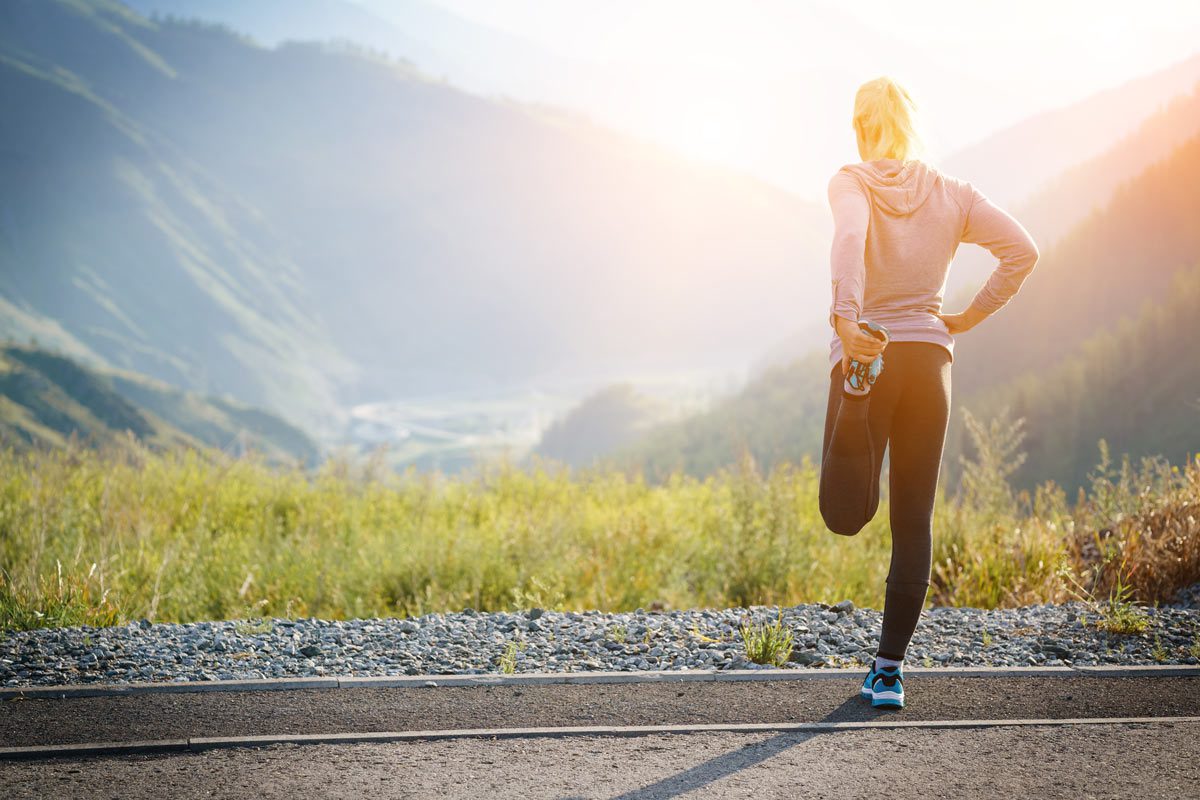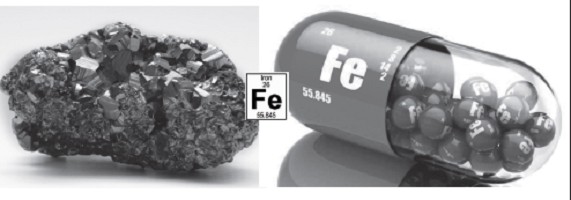
Iron insufficiency is noted as being the most prevalent micronutrient deficiency worldwide. There are a number of reasons why this could be; however, the most intriguing is the possibility that it is not always a lack of iron in the body leading to signs of deficiency but a lack of the body’s ability to recycle and use stored iron. There are other micronutrients that support healthy iron function in the body. Regardless, we do still need to get iron from our daily diet, and many modern diets are lacking in bioavailable iron. We all think we know iron, but, in reality, it may be one of the most misunderstood minerals. Let’s dive in and see if we can shed some light. Buckle up; it’s going to get a little technical…
Low Iron?
The World Health Organisation considers iron to be the most deficient micronutrient in global diets, with nearly a third of the population being affected. Women are especially susceptible, with monthly menstruation regularly decreasing their iron stores. Additionally, women in the developed world are more likely to eschew red meat in their diet due to outdated nutritional guidelines, which were based on incomplete science in the mid to late twentieth century—more on that later. The elderly can also experience low iron bioavailability, and children and adults in poorer countries are highly likely to be affected by low iron intake. Other causes of low iron stores may be gastrointestinal bleeding, kidney and bowel conditions, infections (especially malaria and parasites), childbirth in the developing world, or poor diet. Iron is essential for supporting energy production, brain and nerve function, and enzyme activity, but it is most famously known for its role in haemoglobin.
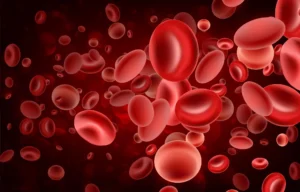
Low or underutilised iron leads to low levels of haemoglobin in our red blood cells. Haemoglobin carries oxygen through our blood, and if there are too few or abnormal red blood cells or too little haemoglobin, there will be decreased oxygen getting to the body’s tissues. If this occurs, we may start to feel tired, have cold hands and feet, feel weak, dizzy, or lightheaded, or be short of breath, and further on it can lead to pale mucous membranes and skin, easy bruising, and rapid heart and breathing rates, and more. Low iron bioavailability and/or utilisation can lead to similar manifestations, as well as histamine intolerance and oxidative stress, among others. Bioavailability simply means how a nutrient is digested and absorbed in our gut and how it is metabolised and used in the body.
Copper and Retinol
We know that vitamin C supports the intestinal absorption of non-haeme iron from plants, eggs, and milk. We know that haeme iron from meat is more easily absorbed and does not require vitamin C. But did you know that there is evidence to suggest that a “lack of iron” may actually be either a lack of copper or insufficient retinol (vitamin A)? Retinol is required to attach copper to ceruloplasmin, and copper is required to make ceruloplasmin. Ceruloplasmin is a copper-carrying glycoprotein that supports the utilisation of iron in the body. Ceruloplasmin also oxidises and binds iron to the transport protein transferrin, which carries iron around the body to be used by various tissues and back to the bone marrow to be recycled into new red blood cells. Ceruloplasmin is the largest protein in our body, and it performs a number of important functions, but its main job is to manage iron and prevent oxidative stress and free radical formation. Copper is also involved with hephaestin, an oxidising protein that attaches iron to transferrin for transport through the portal vein to the liver after intestinal absorption.
Incidentally, sufficient calcium, magnesium, niacin (vitamin B3), and riboflavin (vitamin B2) are required to release the iron from storage in ferritin to be used in cells and in the intestinal absorption of non-haeme iron. While, in any case, it is important to ensure the sufficiency of those nutrients in a diet, we will focus on the importance of copper and vitamin A in this article. Nutritionally speaking, iron may be one of the most misunderstood essential minerals, and we must go way back in time to find clues as to what might really be happening.
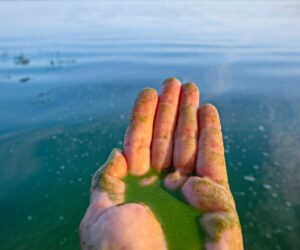
Billions of years ago, the only life on earth was anaerobic, meaning that it didn’t need oxygen to live. Life was single-celled bacteria and archaea that used iron to respirate and make energy. The thinking is that around 2.4 billion years ago, one of those bacteria, called oxyphotobacteria, developed the ability to photosynthesize sunlight, releasing oxygen as a byproduct. This is known as the Great Oxygenation Event, which eventually created our atmosphere. Now, oxygen is a very reactive molecule, especially with iron, and so something was then required to manage oxygen and iron and the oxidative stress that it could cause. This “something” was copper. Without copper, specifically ceruloplasmin, we cannot utilize iron or prevent it from oxidizing, or “rusting”. And without vitamin A, we cannot make ceruloplasmin.
Why would we be lacking vitamin A? And, for that matter, are we even lacking copper…or iron?
Let’s go back to that “incomplete science” in the last century. The whole story is too convoluted to go into here, but the upshot of it is that somewhere around the 1970s, the dietary guidelines flipped upside down: from prioritizing bioavailable and nutrient-rich animal foods—meat, fish, organs, and dairy—to promoting grain-based and carbohydrate foods and from emphasizing fat-soluble vitamin-rich animal fats to pushing industrial seed and vegetable oils. The “science” that the Western governments followed was incorrect and found to be so via more detailed investigation throughout the following decades: there was no need to avoid saturated fat and cholesterol, after all. This was too late for many of the unsuspecting public, who dutifully avoided those traditional foods that humans and prehumans had been eating for millions of years in favour of low-fat and nutritionally poor processed food products. The effect on our overall health has been catastrophic in terms of chronic disease.
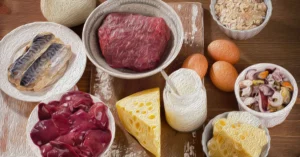
What has all of that got to do with vitamin A? Vitamin A is a fat-soluble vitamin found only in animal foods and fats. Specifically, this is preformed vitamin A, or retinol, and is the form of vitamin A that our body can easily absorb and use. Vitamin A is needed, in large quantities, to do a myriad of vital jobs in the body. For iron to be utilized properly in the body, you need bioavailable copper, attached to ceruloplasmin; For copper to be bound to ceruloplasmin, you need to get plenty of vitamin A. If copper cannot bind to ceruloplasmin, it can become toxic. Without enough ceruloplasmin, iron cannot bind to carrier proteins and can become toxic. We do store vitamin A in our liver and fat tissue, but traditional diets were so much richer in vitamin A than our modern diet, meaning that we can use it up faster than we replace it.
There is very limited conversion of “provitamin A,” or carotene, in plant foods, to retinol in the body, and many people cannot make the conversion at all. That means most of us cannot get enough vitamin A from carrots or beetroot. Incidentally, it is a similar situation for the animal-sourced omega-3s: DHA and EPA.
Many of us are not getting enough copper in our diet. Soils can be low in copper. There are also substances in our diets and environments that deplete copper and/or ceruloplasmin. This includes glyphosate and other industrial sprays, ascorbate, high fructose corn syrup, refined sugars, antibiotics, artificial light exposure, and oral contraception.
Nutrient Sources
The most bioavailable sources of copper are from animal foods, especially offal (organ meats), bee pollen, and shellfish. The highest amount is in liver, which just so happens to be rich in vitamin A and iron (and most other vitamins and minerals!). Liver and other organ meats also contain varying amounts of vitamin C complex, which is also required to make ceruloplasmin. If we look to traditional foods, the foods we’ve been eating as long as we have been human, then we can see the wisdom in consuming those animal foods that have all the bioavailable micro and macronutrients we need, in optimum ratios, and in synergistic balance with each other.
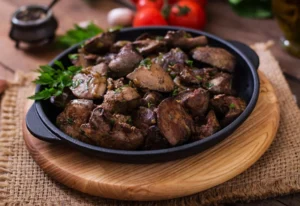
As for our old friend, iron, well, we may have been too hyper-focused on him, but even though we recycle most of our usable iron in our reticuloendothelial system, we do still need to be aware of our daily intake and to get it from the most bioavailable sources. Because iron is absorbed in the duodenum, or the first part of the small intestine, and most plant foods are still being broken down at that point, much of the plant-based non-haeme iron can be lost before absorption. Iron absorption in the gut is also inhibited by polyphenols, plant proteins, and phytates—very high in grains, nuts, seeds, and beans—and is enhanced by meat proteins. We can be sure to get bioavailable haeme iron, along with copper and plenty of preformed vitamin A (retinol), vitamins, minerals, and cofactors, in those animal foods that sustained humans and our hominid ancestors over millions of years, but if you are still worried about your iron intake, you can always look to supplementation.
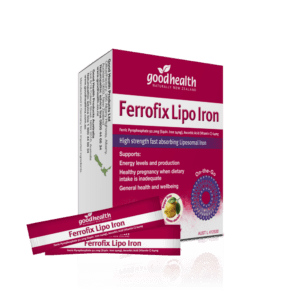 Ferrofix Lipo Iron
Ferrofix Lipo Iron
Good Health Ferrofix Lipo Iron is a scientifically researched supplement containing a high strength,24mg, of Liposomal iron, a fast-absorbing form of iron. The microencapsulated iron, along with vitamin C, enhances bioavailability and absorption. Ferrofix Lipo Iron provides support for iron levels during pregnancy and when dietary intake is inadequate. Liposomal delivery is gentle on the gastrointestinal tract, reducing the risk of an upset stomach. Ferrofix Lipo Iron is an on-the-go solution that can be taken with or without water, with a great tasting lemon sherbert flavour, and it comes in a box of 20 powder sachet sticks. Suitable for vegetarians and vegans.
Iron Recommended Daily Intake RDI:
The RDI for iron is based around what we use every day to keep our red blood cells healthy and for iron to do its other jobs vs. what is bioavailable in foods. As adults, we use approximately 25 mg of iron every day, and most of that should be recycled by a healthy reticuloendothelial recycling system; however, the rate at which we use iron will differ depending on our activity level, our size, and, if female, our age/stage. Around 30% of haeme iron from meat is absorbed in the gut. Approximately 1% (beans) and 2% (grains) to 9% (leafy greens) of non-haeme (vegetarian-sourced) iron may be absorbed if adequate vitamin C is present.
Women 19-50 years: 18mg daily (32 mg for vegetarians/vegans)
Women 51+ years: 8mg daily (15 mg for vegetarians/vegans)
Pregnant women: 27mg daily (49 mg for vegetarians/vegans)
Breastfeeding women: 9mg daily (16 mg for vegetarians/vegans)
Men 19+ years: 8mg daily (15 mg for vegetarians/vegans)
Omnivores, stay below 45mg/day from food + supplements combined.
Always read the label and use as directed. Vitamin and mineral supplements should not replace a balanced diet. If symptoms persist see your healthcare professional. For more information contact our naturopaths on 0800 446 634. Good Health, Auckland

